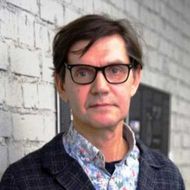- A
- A
- A
- ABC
- ABC
- ABC
- А
- А
- А
- А
- А
- HSE Campus in St. Petersburg
- School of Arts and Humanities
- Department of History
- News
- Comparative Historical Studies of Empire and Nationalism
-
Department
-
Educational programmes
Address:
190068 Saint Petersburg
123 Griboedov channel, Room 123
Phone:+7 (812)786-92-49
Postal address:
190068 Saint Petersburg
123 Griboedov channel
The Department of History was created in 2012. The overarching goal of the department is systematic development of the field of global, comparative, and transnational history as a potent tool of overcoming the limitations of national history canon, fostering interdisciplinary dialogue in the field of social sciences and humanities, and brining new public relevance to historical knowledge. The department mission includes the development of new type of historical undergraduate and graduate education in Russia and pioneering new research fields in Russian historiography in dialogue with the global historical profession.
 Social History of the True Orthodox Christians Wandering in Russia. Capitalism, Communism, and Apocalypse, 1900-1930
Social History of the True Orthodox Christians Wandering in Russia. Capitalism, Communism, and Apocalypse, 1900-1930
L.; NY: Routledge, 2025.
Historical Materialism. 2025. Vol. 33. No. 2. P. 43-80.
In bk.: Women, Gender, and Technosciences, 1900–2020. A Beard to Govern. Routledge, 2025. Ch. 7. P. 123-140.
Khvalkov E., Levin F., Кузнецова А. Д.
Working Papers of Humanities. WP. Издательский дом НИУ ВШЭ, 2021

Comparative Historical Studies of Empire and Nationalism
"Russia’s Empires. Thinking About Empire"
Language: English
Time: December 14-21, from 15.20-16.40 at 17 Promyshlennaya St .
Summary of the course:
Driven by a powerful urge to search for enduring patterns, historians read particular political formations backwards and forwards through time, discovering roots of later formations in earlier precursors. The shape of the present appears already and always evident in the past waiting impatiently to be released. Thinking about the history of Russia in its broad sweep, our interest was to take apart older, tired interpretations, set aside as much as seemed sensible in the standard categories of historical analysis, and look further for new understandings suggested by the evidence of the past. Russia Empires proposes that various formations flash on the scene at different times; by looking at their meanings in context we appreciate them for what they were at the time rather than as antecedents or imperfect drafts of things to come. While acknowledging continuity across historical periods, we also pay attention to what institutions, discourses, and practices did not survive.
Rather than seek the roots of the Russian nation or dig for the origins of the Revolution or the collapse of the Soviet Union, our book highlights one fundamental, defining characteristic of Russian governance that endures powerfully throughout its history: its imperial form of rule through difference and, in most of its history, through inequality. From its first glimmers in the Kievan period through the fall of the Soviet Union, Russian power in its various iterations was built on relations of difference, whether of tribe or language, faith or region, estate, rank, class, gender, or dynasty. Through most of their history Russian rulers and those they ruled understood power relations and membership in the polity as particularized, manifested in different modes, allowing different claims and different obligations according to hierarchies of difference.
Empire was a polity based on conquest and maintained through the difference between the ruling institution and its subjects, as well as the subordination of periphery to the imperial center. Through conquest and force, the self-rule and/or sovereignty of subjects, peoples, and polities were usurped by the imperial centers, and an inequitable relationship of superiors ruling over designated inferiors was established. War and violence both made the Russian empire and brought it to an end, only to be replaced by a new state formation, the Soviet Union, itself the product of economic and military collapse and revolutionary violence. When one considers square acreage and continuity over time, the Russian Empire was the largest land empire and the most durable in history. Like a playground bully, from at least the eighteenth century, Russia made its neighbors nervous and was perceived to be a threat to others. Yet, paradoxically, such a vast state was uniquely vulnerable, from nomads in Central Asia, Crimea, and Turkestan, and eventually from modern militarized powers to its west and east. Russia was neither consistently aggressive and expansive nor always capable of repulsing threats from such neighbors as Poland, Sweden, the Tatars, or the Ottoman or Hapsburg empires. Moreover, its very vastness presented immense problems for governance, communication, and the formation of a sense of shared history and fate required for national identity. If the United States in the twenty-first century can be thought of as a “security state,” Russia and the Soviet Union through much of its history can be considered an “insecurity state.”

